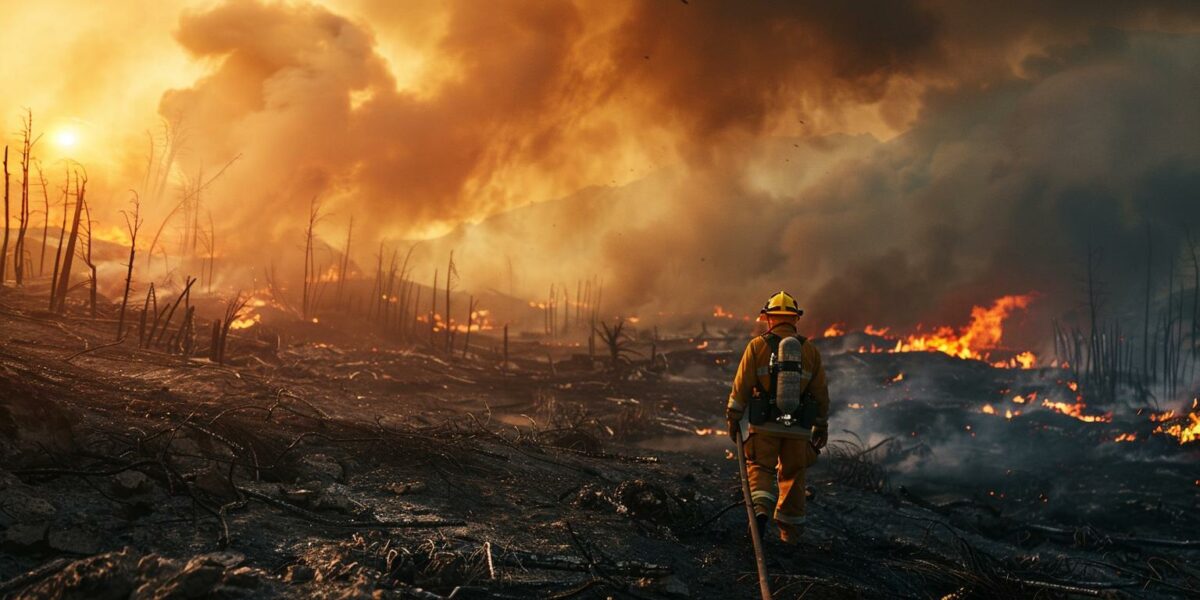Unprecedented Wildfires Ravage the West
Combining years of extensive fire suppression with the impacts of climate change has set the stage for enormous wildfires across the western U.S. and Canada. These fires are not only larger but also more challenging to control than ever before. Experts suggest that the solution lies in adopting the use of controlled burns, reminiscent of indigenous practices.
The recent fires have been described as “amped up” by researchers at Yale’s School of the Environment. These fires, although not necessarily more frequent, are significantly more intense due to a warming atmosphere. The trend of extreme wildfires is part of a broader series of climate change-induced disasters.
Notably, ten of California’s largest fires have occurred within the last five years. This pattern underscores the increasing severity and size of wildfires, driven by fluctuating weather conditions exacerbated by climate change. The Park Fire, now the eighth largest, continues to expand, highlighting the urgent need for effective solutions.
Firefighting resources are being stretched thin as the fires rage on through the night without respite. This relentless intensity, coupled with an extended fire season, poses a significant challenge for firefighters. The quest for answers becomes increasingly critical as these blazes show no signs of abating.
Devastating Impact on Forests and Ecosystems
The intensity of today’s wildfires is so extreme that it fundamentally transforms ecosystems. In many regions, forests are unable to regenerate as they once did. Instead, they are often replaced by invasive grasses, which are highly flammable, further perpetuating the cycle of destruction.
Climate change plays a pivotal role in this transformation. The hotter conditions hinder the natural recovery process of plant life. This shift not only affects the immediate aftermath of the fires but also the long-term health and stability of entire ecosystems.
Historically, fires were a natural part of the landscape, frequently ignited by lightning and indigenous burning practices. However, the cessation of these practices during Colonial settlement has led to an accumulation of fuel, resulting in the current severity of wildfires.
Experts argue that reintroducing controlled burns is essential. While this approach is challenging due to the lack of expansive open spaces, it remains a crucial strategy to mitigate the risk of catastrophic wildfires.
The Role of Fire Suppression in Current Wildfire Crisis
Decades of extinguishing fires at their inception have contributed to the present wildfire crisis. Unlike other regions where fire is used to manage vegetation, the western U.S. has seen a buildup of fuel, leading to hotter and more destructive fires.
Tim Brown, a research professor, emphasizes that the current situation is a result of this accumulated fuel. The fires now burn with such intensity that they cause more damage than natural fires typically would. This highlights the need for a paradigm shift in fire management strategies.
To combat this, experts propose embracing the use of fire on our terms through controlled burns. This approach aims to reduce the fuel load and create more manageable fire conditions, ultimately preventing the extreme wildfires we are witnessing today.
Implementing controlled burns, however, is not straightforward. The practical challenges of conducting these burns in populated and developed areas are significant. Nonetheless, finding a balance between beneficial prescribed burns and harmful wildfires is crucial for future wildfire management.
Future Fire Management and the Need for Change
As climate change continues to alter the landscape, the need for proactive fire management becomes increasingly urgent. Experts agree that the current trajectory of wildfires is unsustainable and requires immediate action. The question remains: how can we effectively implement controlled burns to reduce the risk of devastating wildfires?
The answer lies in learning from indigenous practices and adapting them to modern contexts. By strategically using fire to manage vegetation, we can create a more resilient landscape capable of withstanding future wildfires. This approach not only reduces the fuel load but also promotes ecological health.
Three key strategies for effective fire management include:
- Increasing public awareness and education about the benefits of controlled burns.
- Allocating resources and funding to support controlled burn initiatives.
- Collaborating with indigenous communities to integrate traditional fire management practices.
Ultimately, the goal is to shift from a reactive to a proactive fire management strategy. By embracing controlled burns and other innovative approaches, we can mitigate the impact of wildfires and protect our communities and ecosystems for generations to come.



Christian
I’ve seen controlled burns in action and they really do work! Thanks for spreading awareness. 😊
clara
Shouldn’t we be focusing more on reducing emissions? This seems like treating symptoms, not the disease.
Carter
Seems like a bandaid solution. What about addressing the root causes of climate change?
Rose6
This is fascinating! Could these techniques be applied in other parts of the world too?
AriaMoonlight
Can we really rely on these old methods in the face of modern climate change?
ava8
Great read! But how do we ensure these controlled burns don’t get out of hand?
Julian5
Why did we stop using these ancient practices in the first place?
Elena
Isn’t it risky to do controlled burns near populated areas? How do they manage that?
laurenodyssey0
Wow, I never knew controlled burns could be so effective! Thanks for the info. 😊